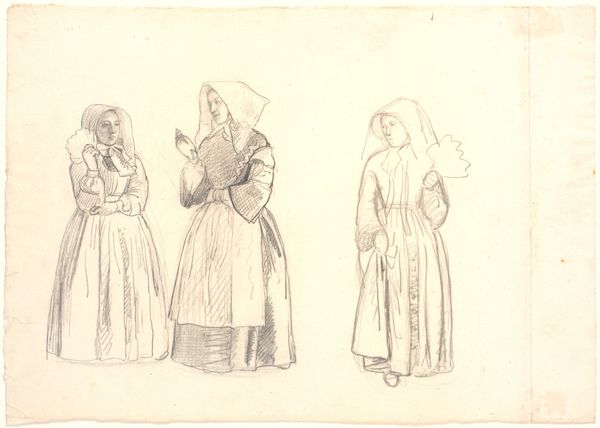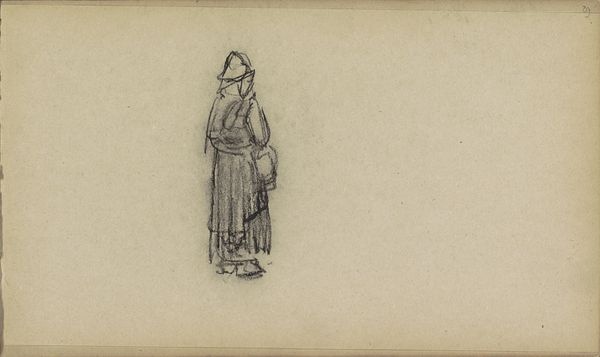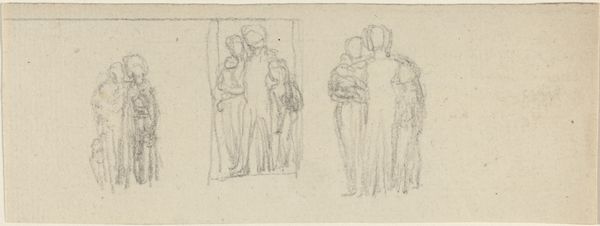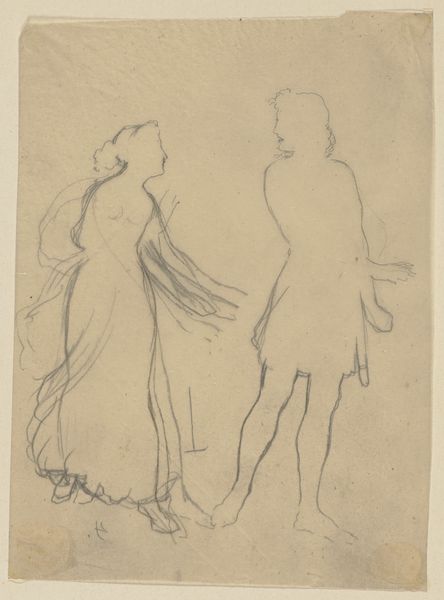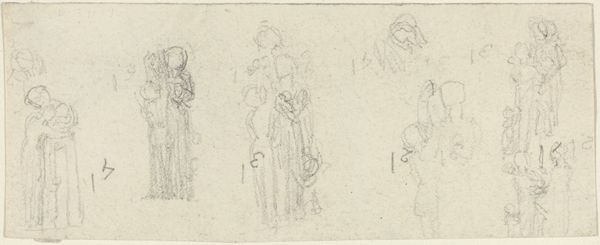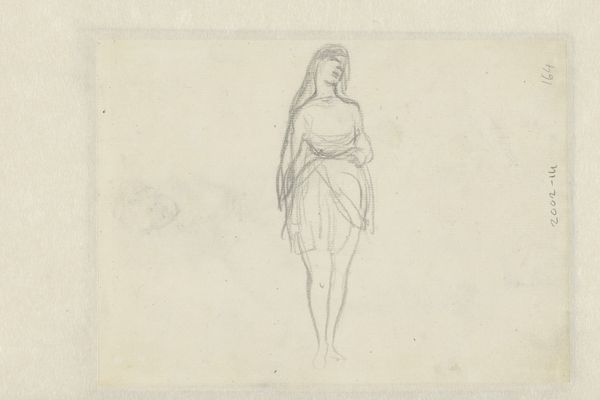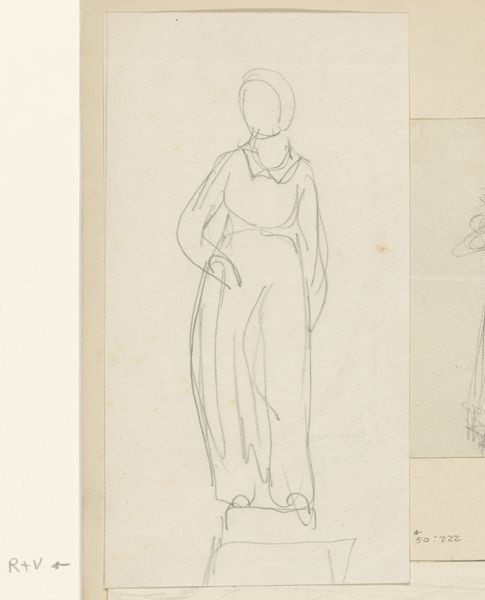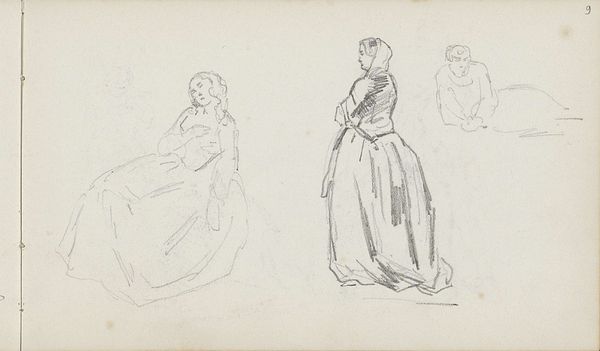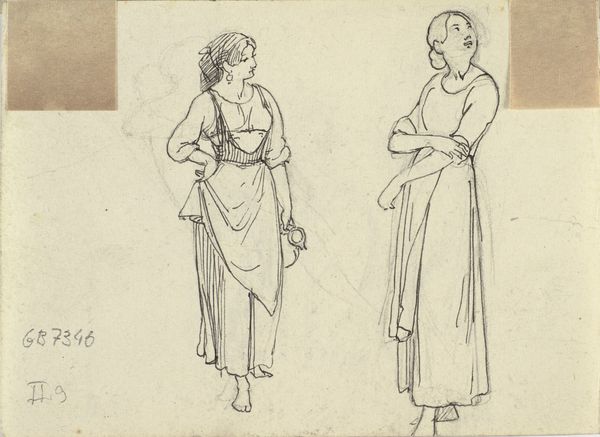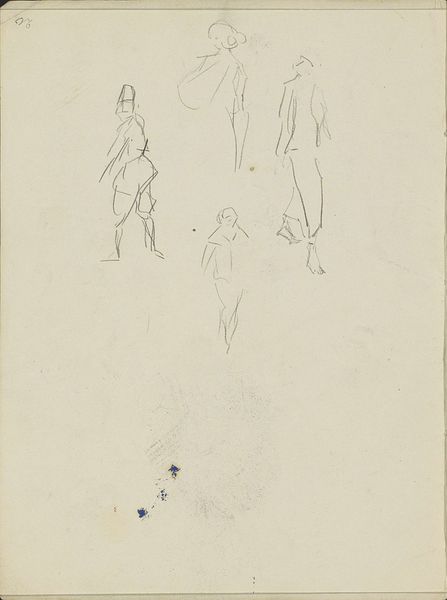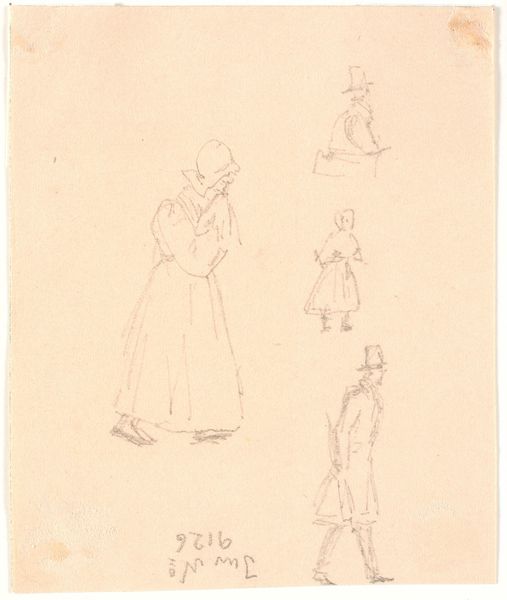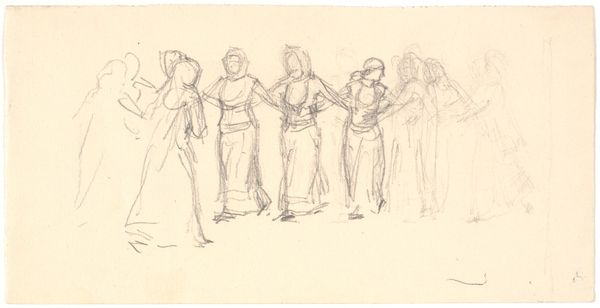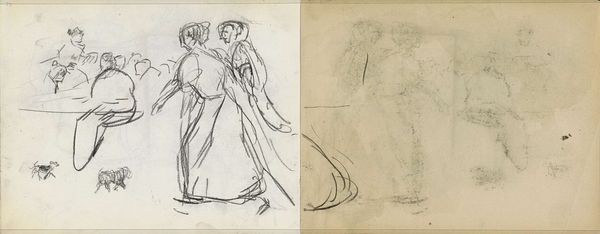
drawing, pencil
#
portrait
#
drawing
#
neoclassicism
#
figuration
#
pencil
#
academic-art
Dimensions: overall: 8.8 x 13.1 cm (3 7/16 x 5 3/16 in.)
Copyright: National Gallery of Art: CC0 1.0
Curator: "Three Sketches of a Standing Woman" dating from around 1790, a pencil drawing by John Flaxman. A series of studies of a female figure take center stage here. Editor: I’m immediately struck by the starkness of the imagery, how ghostly the figure on the left is and how much more defined the outlines are in the two drawings to the right. The woman depicted, almost mannequin-like, presents this feeling of both presence and erasure, calling attention to what we choose to remember—and what we consciously ignore. Curator: Interesting. The piece exemplifies Flaxman's Neoclassical style and is reflective of academic art practices. Each iteration gives a different perspective, almost a breakdown of a pose, a symbol in parts as it slowly resolves across the surface. It shows not only the form, but how it relates to perspective. Editor: Yes! What is her stance here? The hands clasped, and her blank stare convey an overwhelming quietude that feels significant. But is that intended, or merely an accident? Her lack of specificity, her almost incomplete form is fascinating. There is a strange passivity. Were women permitted an active existence beyond domestic work at this point? It speaks volumes about how women of that time were viewed and ultimately treated. Curator: Flaxman drew inspiration from classical sculpture. Remember the "Flaxman outline" which revolutionized design! And within a culture saturated with classical ideals, he evokes a sense of timelessness that transcends mere aesthetic choices and carries specific emotional, psychological weight that is rooted in antiquity. Editor: Agreed, Flaxman's skill is indisputable, even within a small-scale work such as this one. His commitment to representing this aesthetic ideal perhaps unknowingly reinforces the limited and often problematic role assigned to women in that historical moment. It reflects a cultural memory, an ongoing negotiation, a reinforcement of ideals of not only femininity, but power structures during that period. Curator: Seeing how one of our greatest Neoclassical artists plays with visual cues through an anthropological and cultural lens offers valuable insight. Thanks! Editor: Absolutely! A view into 18th-century gender dynamics through art! Thanks for diving into the many angles!
Comments
No comments
Be the first to comment and join the conversation on the ultimate creative platform.
